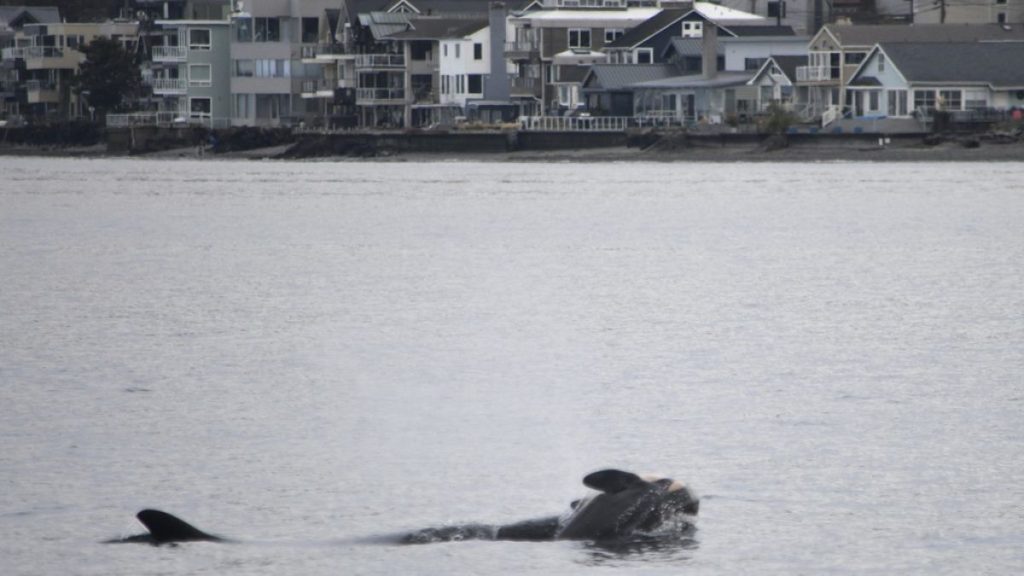The tragic story of Tahlequah, a female orca also known as J35, has resurfaced, gripping the world once more with a poignant display of maternal grief. This endangered Pacific Northwest orca, famous for carrying her deceased calf for 17 days in 2018, is again mourning the loss of a newborn. The Centre for Whale Research confirmed the devastating news, reporting that Tahlequah has been carrying her latest deceased calf since January 1st, 2024. This heartbreaking event underscores the precarious situation faced by the southern resident killer whale population, teetering on the brink of extinction.
Tahlequah’s profound mourning rituals, observed by researchers and captured in photographs and videos, offer a glimpse into the complex emotional lives of these highly intelligent and social creatures. The calf, a female, is believed to have died shortly after birth, echoing the tragic fate of Tahlequah’s previous calf in 2018. Researchers observed Tahlequah carrying the small body on her head and snout, diving to retrieve it when it slipped away into the water. This behavior, while heartbreaking, is not unique to orcas. Similar displays of grief and mourning have been documented in other socially complex animals with long lifespans, such as primates and dolphins, highlighting the depth of emotional bonds within these species.
The recurring tragedy of Tahlequah’s losses resonates deeply within the scientific community and the public, underscoring the urgent need for conservation efforts. The southern resident killer whale population, comprising three pods, faces a trifecta of threats: a scarcity of their primary food source, Chinook salmon; the detrimental effects of pollution; and the disruptive impact of vessel noise, which interferes with their echolocation-based hunting strategies. These combined pressures have driven the population to a critically low level, with only an estimated 73 individuals remaining.
The loss of Tahlequah’s calf is particularly devastating for several reasons. First, each calf represents a vital opportunity to bolster the dwindling population. The death of a female calf, like this one, carries an even greater loss, as it represents the potential for future offspring. Secondly, this marks the second calf mortality for Tahlequah out of four documented births, compounding the emotional toll on the mother and her pod. The chronic stress experienced by these orcas due to environmental pressures and the repeated loss of offspring can further compromise their health and reproductive success.
The somber news of Tahlequah’s loss is tempered by a glimmer of hope: the confirmed sighting of another newborn calf, J62, within the J pod. This tiny addition offers a fragile symbol of resilience within the struggling population. However, the survival of J62 and other newborns remains uncertain, given the high mortality rate among orca calves. Research indicates that only about one in five orca pregnancies results in a calf surviving to its first birthday, with estimates suggesting a 50% mortality rate within the first year.
The southern resident killer whales, distinct from other orca populations due to their salmon-based diet, are identified by unique markings and fin variations, each assigned a number and name. This meticulous tracking allows researchers to monitor individual whales and gather crucial data about their behavior, social structures, and reproductive patterns. The ongoing research and public awareness generated by cases like Tahlequah’s are essential for driving conservation efforts. These efforts focus on increasing Chinook salmon populations, mitigating pollution, and regulating vessel traffic to minimize noise disturbance. The survival of this iconic species hinges on the success of these initiatives. The world watches with bated breath, hoping that the heartbreaking story of Tahlequah will serve as a catalyst for change and a renewed commitment to preserving these magnificent creatures for future generations.














